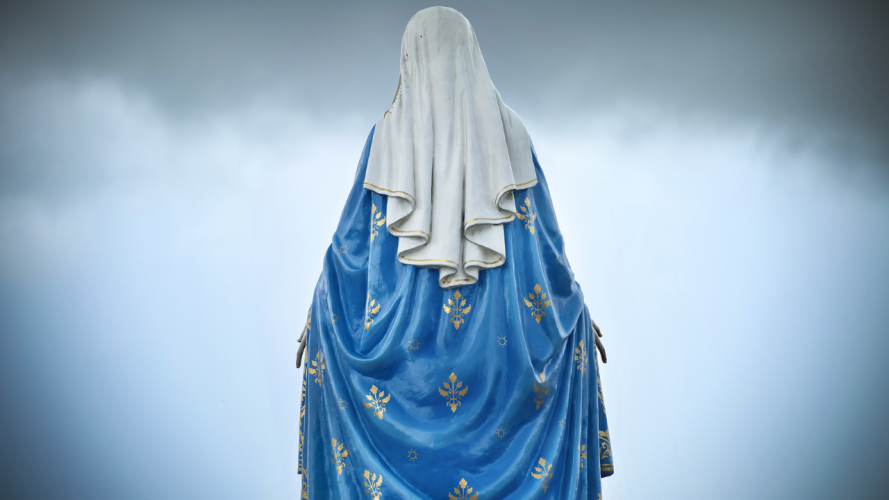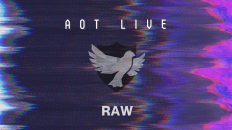The Protestant Reformation was a momentous theological revolt against the corruption and totalitarian control of the Roman Catholic Church that began in Europe in the 1500s. Martin Luther in Germany, Ulrich Zwingli in Switzerland, and John Calvin in France were a few of the many protesting various unbiblical practices of the Catholic Church. The common objective among all Reformers was a return to sound biblical doctrine.
One issue at the center of the protest was the Catholic claim of apostolic succession. This is the claim that the Roman Catholic popes represent an unbroken chain of authority from the apostle Peter giving the pope monarchical preeminence and denominating the Roman Catholic Church as the only true church over all churches everywhere. The pope’s proclamations, church doctrine, and tradition were (and still are) held to be equally infallible and authoritative to Scripture itself within the Roman Catholic system.
The Reformers and orthodox Protestants today affirm only God’s revealed Word in the 66 canonical books of Holy Scripture to be infallible, inerrant in its message, and entirely sufficient. In 2nd Timothy chapter 3 we read:
All Scripture is inspired by God and profitable for teaching, for reproof, for correction, for training in righteousness; so that the man of God may be adequate, equipped for every good work.
Reformed theologians today explain that the sufficiency of Scripture was a primary doctrine of the Reformer’s cause. The Roman Catholic Church teaches that Scripture is insufficient for edification and that Faith is insufficient for salvation. This, of course, opens the door to all kinds of error and evil. False teachings like the selling of indulgences to offset sins and time spent in the unbiblical doctrine of a place called purgatory are natural progressions of this low view of Scripture and the adulteration of the Gospel.
The dispute is centered around four fundamental questions:
How is a person saved?
Where does religious authority lie?
What is the church?
What is the essence of Christian living?
From these questions were developed what is now known as the “Five Solas” (sola being the Latin word for “alone”). These five points are foundational to Christian faith, sound doctrine, and they clearly draw the distinction between Protestantism and Roman Catholicism. The Reformers held these doctrines so fundamental to faith that many chose death rather than to recant them. The five essential doctrines of the Protestant Reformation are:
1 – Sola Scriptura, “Scripture Alone.”
The Bible alone is the sole authority for all matters of faith and practice. Scripture and Scripture alone is the standard by which all teachings and traditions of the church must be measured.
2 – Sola Gratia, “Salvation by Grace Alone.”
We are rescued from God’s wrath by His grace alone, not by any work we do. God’s blessing in Christ is the sole efficient cause of salvation.
3 – Sola Fide, “Salvation by Faith Alone.”
We are justified by faith in Christ alone as the only possible satisfaction of God’s perfect standard.
4 – Solus Christus, “In Christ Alone.”
Salvation is found in Jesus Christ alone; no one and nothing else can save. Jesus’ substitutionary death on the cross is sufficient for our justification and reconciliation to God the Father.
5 – Soli Deo Gloria, “For the Glory of God Alone.”
Salvation is of God and has been accomplished by God for His glory alone.
The 5 ‘solas’ clarify the gospel for an unbelieving world and secure the pure gospel from the modifications of opportunistic minds of men- including popes. The gospel is the power of salvation, it is the power that transforms Christ’s enemies into His friends. The five Solas do not say all that needs to be said about true theology, faith, and life, but they are a clear guide to keep us doctrinally sound and on the right track.
Why is the doctrine of the Bible being totally sufficient so important? It keeps Scripture in harmony with God’s character, all good, and unchanging, and it protects the meek from the doctrines of demons. Biblical sufficiency provides us with a true standard by which to assess anything that appears to be supernatural. In Catholic tradition, there are many accounts of Mary, angels, and/or saints appearing and delivering a message from God.
While illusion and misperception is common, it is possible that some of these cases were genuine supernatural occurrences. Satan is hard at work deceiving and seducing as many as possible and disguising himself as an angel of light is to be expected. An apparition being authentic does not mean it is a message from God or a genuine appearance of Mary, an angel, or a saint. 2 Corinthians 11:14 tells us plainly,
…for even Satan disguises himself as an angel of light.
There are truly only two possibilities when it comes to supernatural occurrences. It is either a supernatural miracle of God or it is a manifestation of evil. The only way to determine which is to compare the message of the apparition with Scripture. If the message contradicts or adds to God’s already revealed and complete teachings, then the manifestation is satanic in nature.
Since the 1500’s The Roman Catholic Church and its parishioners have reported periodic appearances of and messages from Mary, the mother of Jesus. Known as apparitions, these appearances are officially recognized as real and divine via the authoritative Magisterium, which is the special teaching authority of the Roman Catholic Church itself. One of the most obvious heresies of the Roman Catholic system is the veneration of Mary as a divine being and a mediatrix (or female mediator) between man and God. The heresy here is clear as the Roman Catholic system offers prayers and supplications to Mary. For clarification on exactly who is to be prayed to, we turn to Scripture, 1st Timothy Chapter 2:
First of all, then, I urge that supplications, prayers, intercessions, and thanksgivings be made for all people… For there is one God, and there is one mediator between God and men, the man Christ Jesus…
One mediator. One advocate. One Savior and His name is Jesus Christ, our King. And what to make of this idea that the living can advocate for the dead? In his work, Summa Theologica, Saint Thomas Aquinas, a venerated source no good Catholic would deny, gives his primary objection to this false doctrine:
It would seem that the dead cannot be assisted by the works of the living. First, because the Apostle says (2 Cor.5:10): “We must all be manifested before the judgment seat of Christ, that every one may receive the proper things of the body, according as he hath done.” Therefore nothing can accrue to a man from the works of others, which are done after his death and when he is no longer in the body. (Aquinas)
For context, let’s establish that in the Roman Catholic system, Mary, the mother Jesus, is venerated even more so than Jesus. Let’s check the Catechism (the church’s official teaching):
- Mary is full of grace: “The Holy Spirit prepared Mary by his grace. It was fitting that the mother of him in whom “the whole fullness of deity dwells bodily” should herself be “full of grace,” (Catechism of the Catholic Church 722).
Here, Mary is the source of Grace, not God.
- Mary is the all holy one: “By asking Mary to pray for us, we acknowledge ourselves to be poor sinners and we address ourselves to the ‘Mother of Mercy,’ the All-Holy One,” (CCC 2677).
In this example, Mary is the advocate before God and Mary is the Holy One.
- Mary delivers souls from death: “…You [Mary] conceived the living God and, by your prayers, will deliver our souls from death,” (CCC 966).
This makes Mary the Savior, not Jesus.
Of course, as Christians, we all see Mary as a beloved person who we acknowledge as the mother of the man Jesus of Nazareth. However, she is in no way spiritually different than any human being. Scripture is crystal clear, there is “none who are righteous, no, not even one”. Jesus is the only flesh to ever live a sinless life and there is no other advocate to which we may pray. None of these assertions of Mary’s deity can be found in Scripture, in fact, this doctrine is essentially antichristian as it replaces Jesus with an idol. It is an insidious deception because it intends to play upon the sentimental nature of the mother-child relationship.
There is most certainly an unseen realm where a spiritual war has been occurring since before the dawn of mankind. In Revelation chapter 16 verses 12 -14 we read this account of the presence of demonic spirits:
The sixth angel poured out his bowl on the great river Euphrates, and its water was dried up, to prepare the way for the kings from the east. And I saw, coming out of the mouth of the dragon and out of the mouth of the beast and out of the mouth of the false prophet, three unclean spirits like frogs. For they are demonic spirits, performing signs, who go abroad to the kings of the whole world, to assemble them for battle…
Not only are these spirits very real, but they are in the employ of the dragon himself, Satan, and their ploy is to seduce and confuse mankind into following their lead. The goal of Satan and his minions is deception. Satan has already been defeated and the only tactic has left is to deceive as many souls as possible before the Harvest. That seems to be exactly what the Marian apparitions are achieving; mesmerizing and seducing men and women and even children away from a righteous Savior and into the cruel clutches of the evil one.
Does this sound too harsh? What is the harm? The church has canonized the following events as official miracles. So, it’s not as if these are just a couple of fringe stories. According to the church, these are authentic appearances of the Virgin Mary, the ‘Mother of God’ on par with Jesus’ appearance after His resurrection and her message is equal to God’s Word. Therefore, it is our duty to analyze these so-called miracles and their messages to see what they communicate. Is it Christian, or antichrist?
In 1531 in Guadalupe Mexico, this entity made an appearance to a young man named Juan Diego. The church records the following excerpts of the message as authentic:
“Know, know for sure, my dearest, littlest, and youngest son, that I am the perfect and ever Virgin Holy Mary.” (theotokos.org.uk/pages/approved/words/wordguad.html)
“I am truly your merciful Mother, yours and all the people who live united in this land and of all the other people of different ancestries, my lovers, who love me, those who seek me, those who trust in me. Here I will hear their weeping, their complaints and heal all their sorrows, hardships, and sufferings.” (theotokos.org.uk/pages/approved/words/wordguad.html)
“Am I not here, I, who am your Mother? Are you not under my shadow and protection? Am I not the source of your joy? Are you not in the hollow of my mantle, in the crossing of my arms? Do you need anything more?” (theotokos.org.uk/pages/approved/words/wordguad.html)
There have also been modern appearances of this entity. In 1917 in Fatima, Portugal three young children, Jacinto Marto, Lucia Santos, and Francisco Marto, said that an apparition of Mary appeared to them that was brighter than the sun. Excerpts of the officially documented and revered message are as follows,
“Are you willing to offer yourselves to God to bear all the sufferings He wants to send you, as an act of reparation for the sins by which He is offended, and for the conversion of sinners?” (theotokos.org.uk/pages/approved/words/wordfati.html)
“I will take Jacinta and Francisco shortly, but you will stay here for some time to come. Jesus wants to use you to make Me known and loved. He wishes to establish the devotion to My Immaculate Heart throughout the world. I promise salvation to whoever embraces it; these souls will be dear to God, like flowers put by Me to adorn his throne,” (theotokos.org.uk/pages/approved/words/wordfati.html)
“Sacrifice yourselves for sinners, and say often to Jesus, especially whenever you make a sacrifice: O Jesus, it is for love of Thee, for the conversion of sinners, and in reparation for the sins committed against the Immaculate Heart of Mary.” (theotokos.org.uk/pages/approved/words/wordfati.html)
“Sacrifice yourselves for sinners”? Where does God’s Word ever instruct that we, as sinners, are able to be a sacrifice for God? Finally, “reparations for the sins committed against the Immaculate Heart of Mary” is most assuredly blasphemy in that it equates Mary with God. The entity claims to be able to forgive sins. This is most certainly a servant of Satan himself. Here we recall 2 Corinthians 11. The Apostle Paul warns of exactly this seduction:
And what I am doing I will continue to do, in order to undermine the claim of those who would like to claim that in their boasted mission they work on the same terms as we do. For such are false apostles, deceitful workmen, disguising themselves as apostles of Christ. And no wonder, for even Satan disguises himself as an angel of light. So it is no surprise if his servants, also, disguise themselves as servants of righteousness. Their end will correspond to their deeds.
These apparitions are idolatrous at best and at worst blasphemous deceptions from Satan. The Guadalupe apparitions tell people that those who love “Mary”, seek her, trust in her, will be healed by her. The apparition is not pointing to Jesus. It is not proclaiming God as the healer. Instead, the apparition points to itself and asks “Do you need anything more?” The implication is that Mary is all we need. Blasphemy. Yet the so-called ‘mother church’ affirms this message as canonical, official, equal with Scripture.
In the Fatima apparition, the heresy of works righteousness is taught when the childrens’ suffering is to be “an act of reparation for the sins” by which God is offended. This is heresy. We read plainly in Hebrews 10:12-15
but He, having offered one sacrifice for sins for all time, SAT DOWN AT THE RIGHT HAND OF GOD, 13waiting from that time onward UNTIL HIS ENEMIES BE MADE A FOOTSTOOL FOR HIS FEET. For by one offering He has perfected for all time those who are sanctified. And the Holy Spirit also testifies to us; for after saying,
The veneration of the dead and the deification of Mary, along with several other antichristian doctrines exposes the Roman Catholic system and its Magisterium as a clear source of false teaching predicted and described in Scripture. No wonder then that the Roman Catholic teaching allows for extra-biblical sources to stand equal to Scripture. The Roman Catholic Church teaches a strange gospel of works righteousness, idol worship, veneration of the dead, and clearly marginalizes our Savior Jesus Christ as merely one of many paths to the Father. Surely there are sanctified, regenerate Christians in the Catholic church today. God has His people everywhere. Nevertheless, as followers of Jesus Christ, commanded to carry the gospel to all the world, we ought to make it a priority to pray for the people in the Roman Catholic system and yes, we should evangelize even the Catholics. Here is a list of some of the false teachings directly from the official doctrine of The Catholic Church:
The Catholic Church is the one true church (CCC 2105)
Infallibility of the Catholic Church, (CCC 2035)
Only the Roman Catholic Church has authority to interpret Scripture (CCC 100)
The Pope is the head of the church and has the authority of Christ (CCC 2034)
The Roman Catholic Church is necessary for salvation (CCC 846)
Sacred Tradition is equal to scripture (CCC 82)
Forgiveness of sins, salvation, is by faith and works (CCC 2036 CCC 2080 2068)
Full benefit of Salvation is only through the Roman Catholic Church (Vatican 2, Decree on Ecumenism, 3)
Grace can be merited (CCC 2010 CCC 2027)
The merit of Mary and the Saints can be applied to Catholics and others (1477)
Penance is necessary for salvation (CCC 980)
Purgatory (CCC 1031 CCC 1475)
Indulgences (CCC 1471 CCC 1478 CCC 1498 CCC 1472)
Mary is Mediatrix (CCC 969)
Mary brings us the gifts of eternal salvation (CCC 969)
Mary delivers souls from death (CCC 966)
Prayer to the saints (CCC 2677)
The Communion elements become the actual body and blood of Christ (CCC 1374 CCC 1376)
From the time of Jesus’ ministry, death and resurrection God has called all people to repentance. We stand on Scripture for truth in these matters and Ephesians 2:1-10 provides clarity on God’s sovereignty and our salvation:
And you were dead in your offenses and sins, in which you previously walked according to the course of this world, according to the prince of the power of the air, of the spirit that is now working in the sons of disobedience. Among them we too all previously lived in the lusts of our flesh, indulging the desires of the flesh and of the mind, and were by nature children of wrath, just as the rest. But God, being rich in mercy, because of His great love with which He loved us, even when we were dead in our wrongdoings, made us alive together with Christ (by grace you have been saved), and raised us up with Him, and seated us with Him in the heavenly places in Christ Jesus, so that in the ages to come He might show the boundless riches of His grace in kindness toward us in Christ Jesus. For by grace you have been saved through faith; and this is not of yourselves, it is the gift of God; not a result of works, so that no one may boast. For we are His workmanship, created in Christ Jesus for good works, which God prepared beforehand so that we would walk in them.
Sources:
Aquinas, Thomas. Summa Theologica. (n.d.). Retrieved from
Boice, J. M., & Ryken, P. G. (2019). Part II How God Saves Sinners. In Foundations of the
Christian faith: A comprehensive & readable theology (pp. 409–459). essay, An Imprint
of InterVarsity Press.
Catechism of the Catholic Church. (n.d.). Retrieved from
http://ccc.usccb.org/flipbooks/catechism/800/index.html
Foley, D. (n.d.). Words spoken by Mary at Guadalupe. Retrieved from
http://theotokos.org.uk/pages/approved/words/wordguad.html
Foley, D. (n.d.). Words spoken by Mary at Fatima. Retrieved from
http://theotokos.org.uk/pages/approved/words/wordfati.html
Wayne, L. (2016, August 24). Christian Apologetics & Research Ministry. Retrieved from
Wayne, L. (2021, February 24). A list of false teachings in the Roman Catholic Church. Christian
Apologetics & Research Ministry. Retrieved November 21, 2021, from
Wayne, L. (2021, March 24). The exaltation of Mary. Christian Apologetics & Research
Ministry. Retrieved November 21, 2021, from
https://carm.org/roman-catholicism/the-exaltation-of-mary/?highlight=mary.




Good stuff brother Brad! I love your blog.
Very interesting, well prepared. Ive always said the catholics will worship anything or anyone rather than worship Jesus Christ… and that for all catholics, being catholic supercedes being a Christian. Catholicism has all the hallmarks of a cult.
While we are on the topic of the Virgin Mary. I noticed one day a fleet of yachts anchored off the coast of Turkiye aka Turkey. This was on the Agean coast. These yatchs were enormous and caught my attention. Then when I picked up a Turkish newspaper lol and behold I see these same yatchs with the headline, “Bill Gates visits the house of the Virgin Mary”. Now how strange is that? I think your blog here explains the hidden reason why he has visited this Kabbalist site.
The links to the “words of Mary” at http://theotokos.org.uk/ need updating.
But, very good blog post.